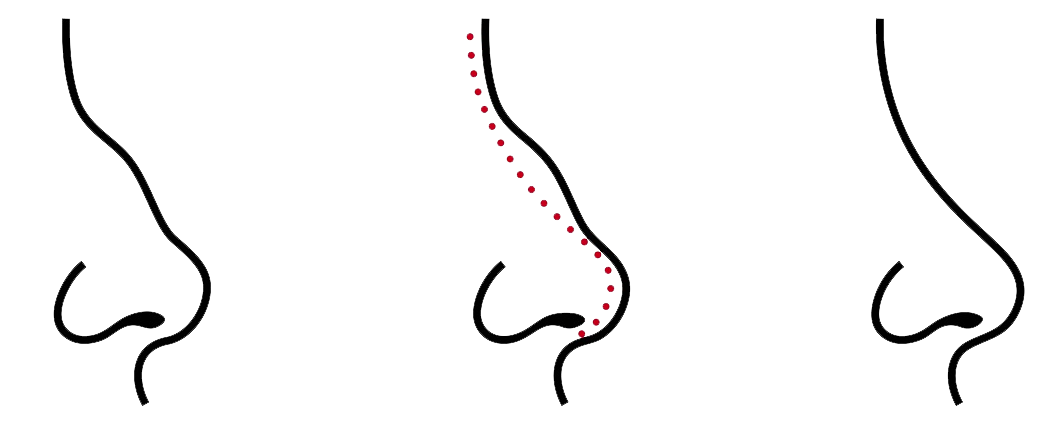

Rhinoplasty is a surgery to reshape the nose to create balance with the other facial features. Also known as a “nose job”, rhinoplasty can address the external nasal structures (nasal hump, bulbous nasal tip or drooping tip) and also the internal nasal structures such as a deviated nasal septum.
There are two types of rhinoplasty: open rhinoplasty and closed or endonasal rhinoplasty. Dr. O’Halloran and Dr. Saar most commonly perform open rhinoplasty as it allows better and more direct visualization of the nasal structures for a more precise correction of the underlying problems. At your consultation at the Center for Cosmetic Surgery in Tyler, Dr. O’Halloran and Dr. Saar will evaluate your specific complaints, anatomy and facial structure to formulate a plan that is suitable to achieve your goals.
A common misconception about rhinoplasty is that the nose can be surgically altered to look like the nose of someone else. This is inaccurate. It is very important to understand that the nasal proportions can be changed and the nose can be reshaped only within the limits of a patients’ own unique individual characteristics and anatomy. The ultimate goal is to improve the patient’s overall facial harmony.
Often, photos will be taken and digitally altered to estimate the anticipated surgical result. Patients must understand that human tissue is not as predictable as a photo manipulation. Rhinoplasty is one of the most difficult surgeries that plastic surgeons perform. Results not only depend on the skill of the surgeon, but also on the quality of a patient’s skin, degree of scarring and other factors that are patient dependent. Also, the results of rhinoplasty do not become completely evident for at least 10-12 months after the operation.
The surgery is done in an outpatient surgery facility. There is a small incision across the base of the nose and on the inside of each nostril to access the underlying structures. Once the corrections have been made, the skin is returned to its normal position. A nasal splint is commonly placed on the outside of the nose. The sutures and the splint are removed about one week after surgery. The first week of recovery involves head elevation, rest and ice packs. There may be some bruising, particularly under the eyes. Care must be taken for several weeks after surgery to avoid strenuous activity and any contact with the nose. The nose is healed at 4-6 weeks after surgery, but the external swelling takes many months to resolve.

At your consultation, Dr. O’Halloran and D. Saar will evaluate your nasal structures and your overall facial structures to formulate a surgical plan. Chin augmentation is sometimes also recommended, as this is an area that is commonly deficient when rhinoplasty is needed. A cost estimate will be provided that will include the surgeon’s fee, the operating room costs and the anesthesia fee. All efforts will be made to ensure that you are comfortable with the surgical plan and anticipated results.